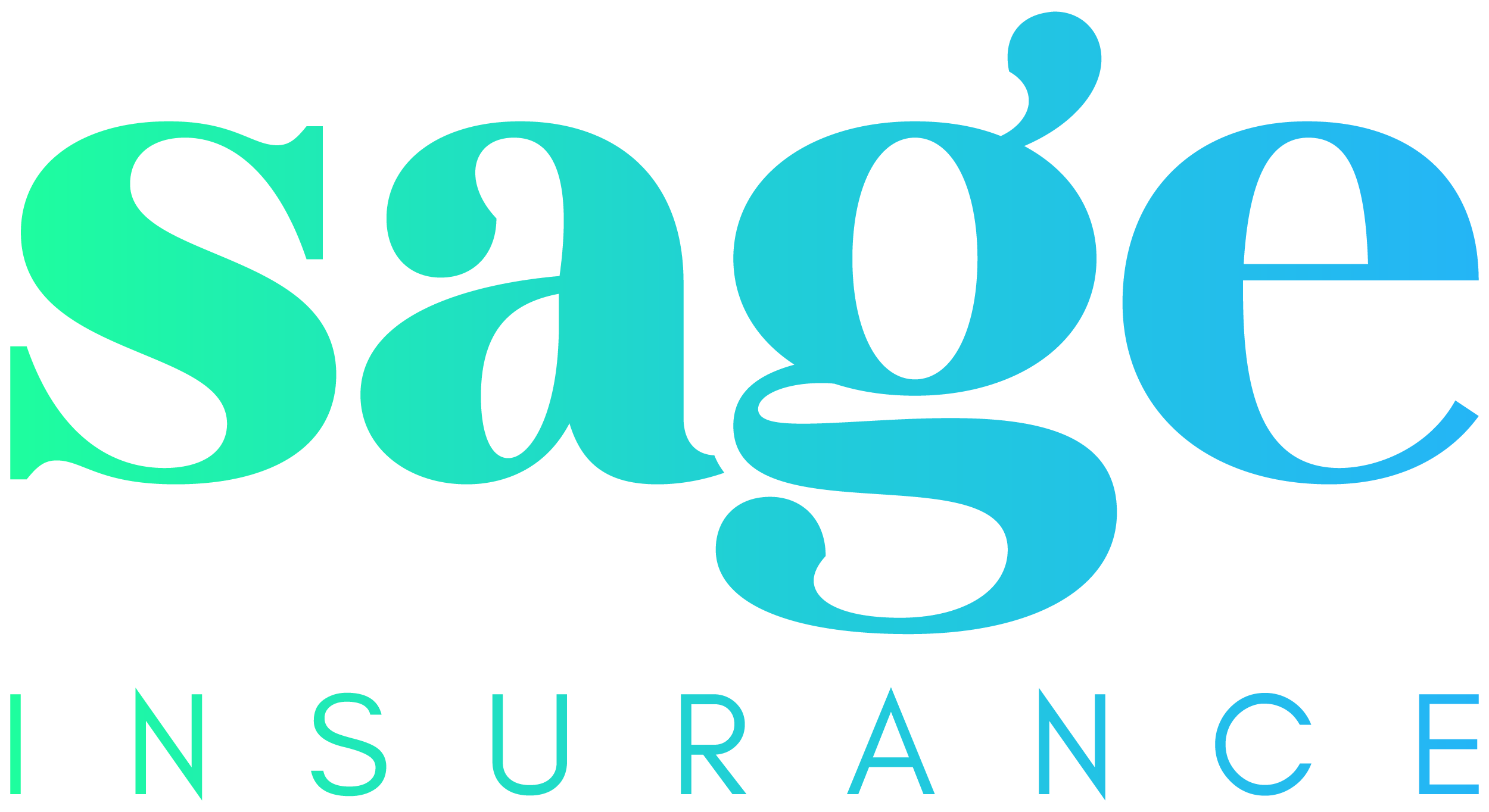


Underinsurance: A Costly Oversight
What Is Underinsurance and Why Should Business Owners Be Concerned?
Underinsurance occurs when a business holds an insurance policy that inadequately covers the full cost of a loss. This might result from underestimated values, outdated policies, omitted coverage areas or poor assumptions.
In a loss scenario, whether it’s a fire, storm damage, machinery breakdown or an operational disruption, underinsurance means the payout you receive won’t be enough to recover fully. It’s not just an inconvenience; it’s a direct threat to your business.
While some may perceive insurance as a sunk cost, those who fail to structure their coverage properly are often the most exposed when it matters most.
How Underinsurance Happens: Common Causes
Many business owners don’t knowingly choose underinsurance. It often stems from:
Outdated Asset Valuations: Property, plant and equipment values can increase rapidly, particularly during periods of inflation or capital investment. However, coverage often isn’t updated to reflect these changes.
Premium-Driven Decisions: Choosing a policy based on cost rather than coverage can lead to sub-limits, exclusions, or underreported asset values.
Incorrect Business Interruption Calculations: Many SMEs miscalculate their revenue recovery period or omit fixed costs from estimates, leaving them severely out of pocket during downtime.
Lack of Specialist Cover: Most businesses now rely on technology, but many still don’t carry cyber insurance, assuming breaches “won’t happen to them.” When they do, these gaps are devastating.
Policy Complexity: Many assume "any" insurance policy is sufficient. In reality, policies contain nuanced definitions, limits and exclusions that require professional interpretation.
Real-World Risk Examples
Outlined below are some examples of how this could occur in your business
Cyber Breach Without Cyber Insurance
A professional services firm suffers a ransomware attack, halting operations for a week and incurring $200,000 in system restoration, legal and notification costs. They held no cyber cover - believing standard liability would suffice. It didn’t. The business had to absorb the full loss and lost clients as a result.
Business Interruption Gaps
A manufacturing business experienced a fire that destroyed a key piece of machinery. The owners had estimated a 3-month downtime, but delays in sourcing parts pushed the return to operations out to 7 months. Their business interruption cover only extended to 90 days, leaving them exposed for the remaining period.
Inadequate stock coverage in retail
A boutique food manufacturer lost a full quarter’s worth of refrigerated stock during an extended power outage. The business had insured their equipment but overlooked the total value of perishable goods during peak season. The payout only covered a portion of the loss, affecting supply commitments to key retailers.
Whilst these are hypothetical, similar situations occur regularly. And, in each case, a broker could have arranged an insurance coverage to provide cover for these losses.
Which Industries Are Most at Risk And Why?
While any business can be underinsured, some sectors face higher risk due to rapid change, complexity or low insurance literacy:
SMEs and Startups: Limited insurance literacy, cost-conscious, fast-changing operations. Our article covering Insurance Essentials for SMEs explores these risks in more depth.
Construction & Trades: Expanding assets, unclear liabilities, variable subcontractor relationships.
Retail & Hospitality: Tight margins, seasonal revenue, heavy reliance on physical premises.
Healthcare & Allied Health: Complex liability exposures, specialised equipment, regulatory change.
Technology & Professional Services: High data reliance, overlooked cyber risk, intangible asset exposure.
Logistics & Transport: Fleet exposure, third-party risks, inconsistent asset tracking. Read our full breakdown in Risk on the Move: Transport and Logistics Coverage.
In most of these sectors, underinsurance stems from a lack of strategic risk evaluation, inconsistent policy reviews or generic off-the-shelf cover.
How Sage Insurance Helps You Stay Protected
At Sage, we work closely with businesses across sectors to ensure their insurance reflects their true exposures, not just minimum compliance.
Our approach includes:
Risk profiling by industry, we tailor insurance reviews based on sector-specific challenges and operational realities.
Accurate valuation & coverage review, we help you determine realistic rebuild costs, indemnity periods and asset values.
Full-market access, we source policies across all major insurers, including specialist providers, so you get the right protection - not just the easiest or cheapest.
Proactive claims support, in the event of a claim, our team advocates on your behalf to ensure full and fair settlement.
The cost of getting insurance wrong far outweighs the investment in getting it right. Underinsurance doesn’t just jeopardise financial health - it affects your reputation, resilience and ability to operate confidently.
At Sage Insurance, we provide a strategic layer of risk protection, ensuring your cover keeps pace with your business.
The below example from iProfileRisk demonstrates the financial implications of being underinsured on a partial loss.

What Is Underinsurance and Why Should Business Owners Be Concerned?
Underinsurance occurs when a business holds an insurance policy that inadequately covers the full cost of a loss. This might result from underestimated values, outdated policies, omitted coverage areas or poor assumptions.
In a loss scenario, whether it’s a fire, storm damage, machinery breakdown or an operational disruption, underinsurance means the payout you receive won’t be enough to recover fully. It’s not just an inconvenience; it’s a direct threat to your business.
While some may perceive insurance as a sunk cost, those who fail to structure their coverage properly are often the most exposed when it matters most.
How Underinsurance Happens: Common Causes
Many business owners don’t knowingly choose underinsurance. It often stems from:
Outdated Asset Valuations: Property, plant and equipment values can increase rapidly, particularly during periods of inflation or capital investment. However, coverage often isn’t updated to reflect these changes.
Premium-Driven Decisions: Choosing a policy based on cost rather than coverage can lead to sub-limits, exclusions, or underreported asset values.
Incorrect Business Interruption Calculations: Many SMEs miscalculate their revenue recovery period or omit fixed costs from estimates, leaving them severely out of pocket during downtime.
Lack of Specialist Cover: Most businesses now rely on technology, but many still don’t carry cyber insurance, assuming breaches “won’t happen to them.” When they do, these gaps are devastating.
Policy Complexity: Many assume "any" insurance policy is sufficient. In reality, policies contain nuanced definitions, limits and exclusions that require professional interpretation.
Real-World Risk Examples
Outlined below are some examples of how this could occur in your business
Cyber Breach Without Cyber Insurance
A professional services firm suffers a ransomware attack, halting operations for a week and incurring $200,000 in system restoration, legal and notification costs. They held no cyber cover - believing standard liability would suffice. It didn’t. The business had to absorb the full loss and lost clients as a result.
Business Interruption Gaps
A manufacturing business experienced a fire that destroyed a key piece of machinery. The owners had estimated a 3-month downtime, but delays in sourcing parts pushed the return to operations out to 7 months. Their business interruption cover only extended to 90 days, leaving them exposed for the remaining period.
Inadequate stock coverage in retail
A boutique food manufacturer lost a full quarter’s worth of refrigerated stock during an extended power outage. The business had insured their equipment but overlooked the total value of perishable goods during peak season. The payout only covered a portion of the loss, affecting supply commitments to key retailers.
Whilst these are hypothetical, similar situations occur regularly. And, in each case, a broker could have arranged an insurance coverage to provide cover for these losses.
Which Industries Are Most at Risk And Why?
While any business can be underinsured, some sectors face higher risk due to rapid change, complexity or low insurance literacy:
SMEs and Startups: Limited insurance literacy, cost-conscious, fast-changing operations. Our article covering Insurance Essentials for SMEs explores these risks in more depth.
Construction & Trades: Expanding assets, unclear liabilities, variable subcontractor relationships.
Retail & Hospitality: Tight margins, seasonal revenue, heavy reliance on physical premises.
Healthcare & Allied Health: Complex liability exposures, specialised equipment, regulatory change.
Technology & Professional Services: High data reliance, overlooked cyber risk, intangible asset exposure.
Logistics & Transport: Fleet exposure, third-party risks, inconsistent asset tracking. Read our full breakdown in Risk on the Move: Transport and Logistics Coverage.
In most of these sectors, underinsurance stems from a lack of strategic risk evaluation, inconsistent policy reviews or generic off-the-shelf cover.
How Sage Insurance Helps You Stay Protected
At Sage, we work closely with businesses across sectors to ensure their insurance reflects their true exposures, not just minimum compliance.
Our approach includes:
Risk profiling by industry, we tailor insurance reviews based on sector-specific challenges and operational realities.
Accurate valuation & coverage review, we help you determine realistic rebuild costs, indemnity periods and asset values.
Full-market access, we source policies across all major insurers, including specialist providers, so you get the right protection - not just the easiest or cheapest.
Proactive claims support, in the event of a claim, our team advocates on your behalf to ensure full and fair settlement.
The cost of getting insurance wrong far outweighs the investment in getting it right. Underinsurance doesn’t just jeopardise financial health - it affects your reputation, resilience and ability to operate confidently.
At Sage Insurance, we provide a strategic layer of risk protection, ensuring your cover keeps pace with your business.
The below example from iProfileRisk demonstrates the financial implications of being underinsured on a partial loss.

What Is Underinsurance and Why Should Business Owners Be Concerned?
Underinsurance occurs when a business holds an insurance policy that inadequately covers the full cost of a loss. This might result from underestimated values, outdated policies, omitted coverage areas or poor assumptions.
In a loss scenario, whether it’s a fire, storm damage, machinery breakdown or an operational disruption, underinsurance means the payout you receive won’t be enough to recover fully. It’s not just an inconvenience; it’s a direct threat to your business.
While some may perceive insurance as a sunk cost, those who fail to structure their coverage properly are often the most exposed when it matters most.
How Underinsurance Happens: Common Causes
Many business owners don’t knowingly choose underinsurance. It often stems from:
Outdated Asset Valuations: Property, plant and equipment values can increase rapidly, particularly during periods of inflation or capital investment. However, coverage often isn’t updated to reflect these changes.
Premium-Driven Decisions: Choosing a policy based on cost rather than coverage can lead to sub-limits, exclusions, or underreported asset values.
Incorrect Business Interruption Calculations: Many SMEs miscalculate their revenue recovery period or omit fixed costs from estimates, leaving them severely out of pocket during downtime.
Lack of Specialist Cover: Most businesses now rely on technology, but many still don’t carry cyber insurance, assuming breaches “won’t happen to them.” When they do, these gaps are devastating.
Policy Complexity: Many assume "any" insurance policy is sufficient. In reality, policies contain nuanced definitions, limits and exclusions that require professional interpretation.
Real-World Risk Examples
Outlined below are some examples of how this could occur in your business
Cyber Breach Without Cyber Insurance
A professional services firm suffers a ransomware attack, halting operations for a week and incurring $200,000 in system restoration, legal and notification costs. They held no cyber cover - believing standard liability would suffice. It didn’t. The business had to absorb the full loss and lost clients as a result.
Business Interruption Gaps
A manufacturing business experienced a fire that destroyed a key piece of machinery. The owners had estimated a 3-month downtime, but delays in sourcing parts pushed the return to operations out to 7 months. Their business interruption cover only extended to 90 days, leaving them exposed for the remaining period.
Inadequate stock coverage in retail
A boutique food manufacturer lost a full quarter’s worth of refrigerated stock during an extended power outage. The business had insured their equipment but overlooked the total value of perishable goods during peak season. The payout only covered a portion of the loss, affecting supply commitments to key retailers.
Whilst these are hypothetical, similar situations occur regularly. And, in each case, a broker could have arranged an insurance coverage to provide cover for these losses.
Which Industries Are Most at Risk And Why?
While any business can be underinsured, some sectors face higher risk due to rapid change, complexity or low insurance literacy:
SMEs and Startups: Limited insurance literacy, cost-conscious, fast-changing operations. Our article covering Insurance Essentials for SMEs explores these risks in more depth.
Construction & Trades: Expanding assets, unclear liabilities, variable subcontractor relationships.
Retail & Hospitality: Tight margins, seasonal revenue, heavy reliance on physical premises.
Healthcare & Allied Health: Complex liability exposures, specialised equipment, regulatory change.
Technology & Professional Services: High data reliance, overlooked cyber risk, intangible asset exposure.
Logistics & Transport: Fleet exposure, third-party risks, inconsistent asset tracking. Read our full breakdown in Risk on the Move: Transport and Logistics Coverage.
In most of these sectors, underinsurance stems from a lack of strategic risk evaluation, inconsistent policy reviews or generic off-the-shelf cover.
How Sage Insurance Helps You Stay Protected
At Sage, we work closely with businesses across sectors to ensure their insurance reflects their true exposures, not just minimum compliance.
Our approach includes:
Risk profiling by industry, we tailor insurance reviews based on sector-specific challenges and operational realities.
Accurate valuation & coverage review, we help you determine realistic rebuild costs, indemnity periods and asset values.
Full-market access, we source policies across all major insurers, including specialist providers, so you get the right protection - not just the easiest or cheapest.
Proactive claims support, in the event of a claim, our team advocates on your behalf to ensure full and fair settlement.
The cost of getting insurance wrong far outweighs the investment in getting it right. Underinsurance doesn’t just jeopardise financial health - it affects your reputation, resilience and ability to operate confidently.
At Sage Insurance, we provide a strategic layer of risk protection, ensuring your cover keeps pace with your business.
The below example from iProfileRisk demonstrates the financial implications of being underinsured on a partial loss.

More


Two Years of Sage: What Building a Brokerage Taught Me About People, Leadership and the Power of Service
1 Dec 2025


What To Do in the First 24 Hours After a Cyber Incident
1 Dec 2025


Business Insurance and Employee Safety: What Every Owner Should Know
12 Nov 2025


Stronger Insurance for a Stressed Workforce
30 Oct 2025

